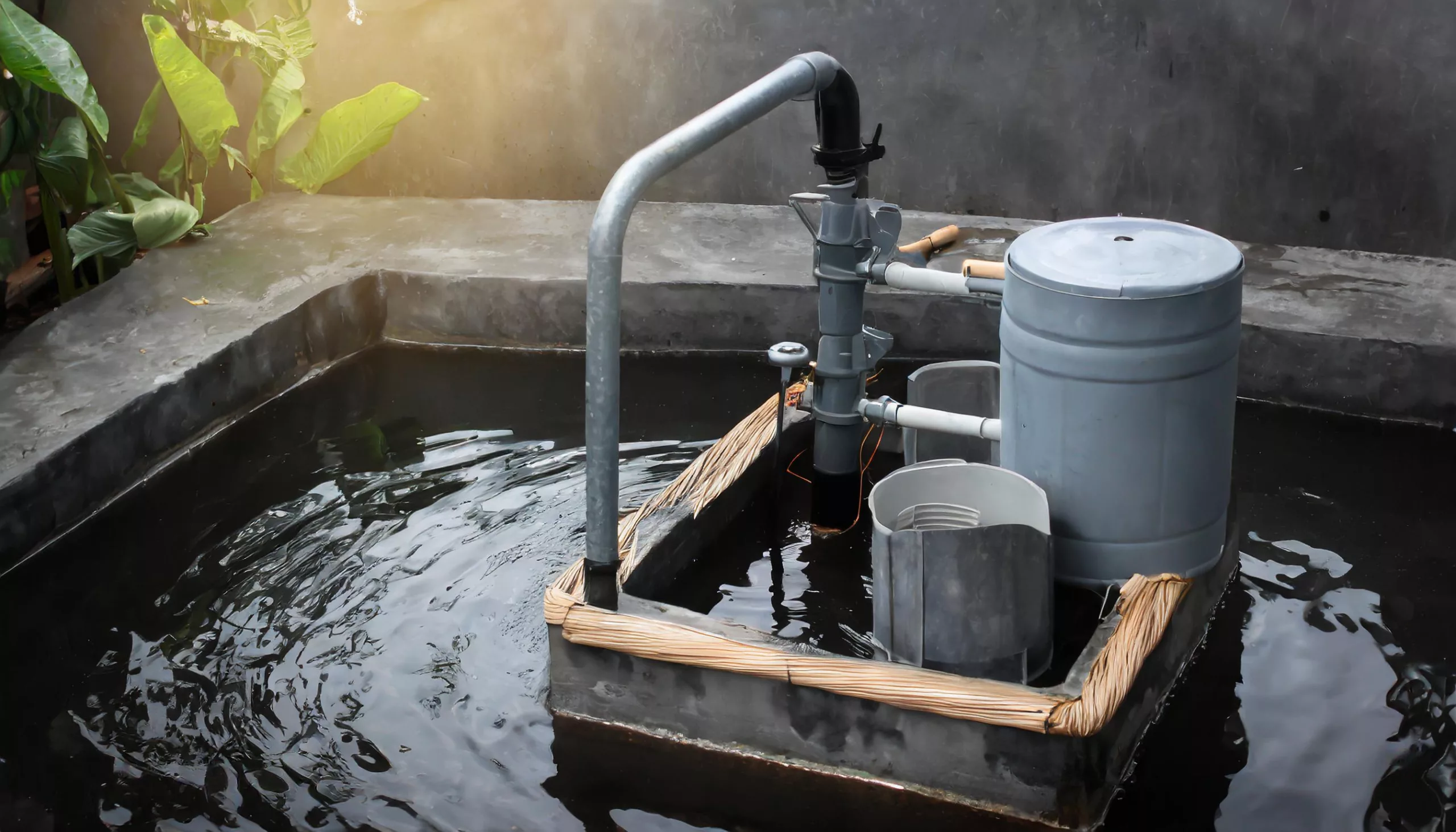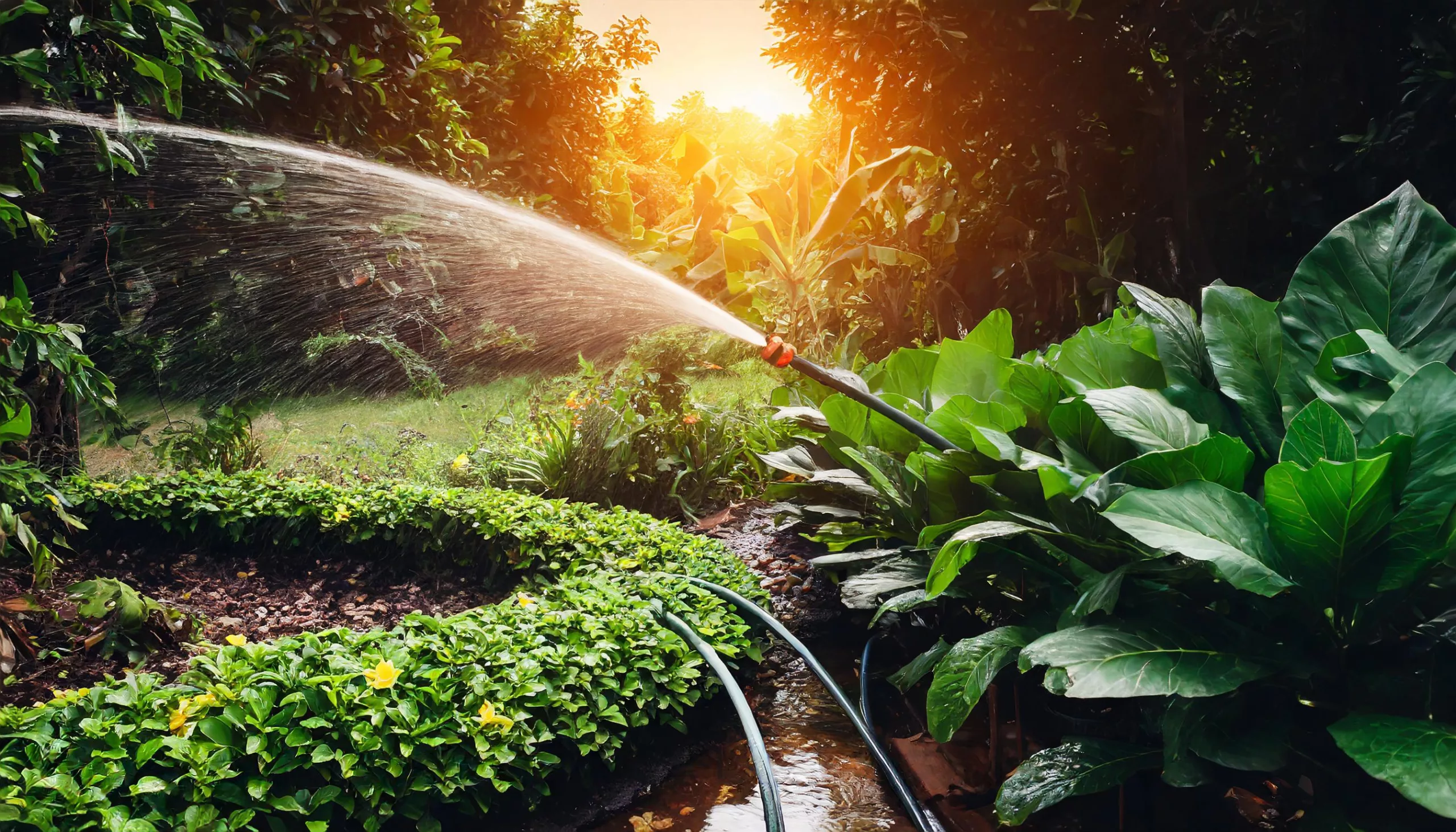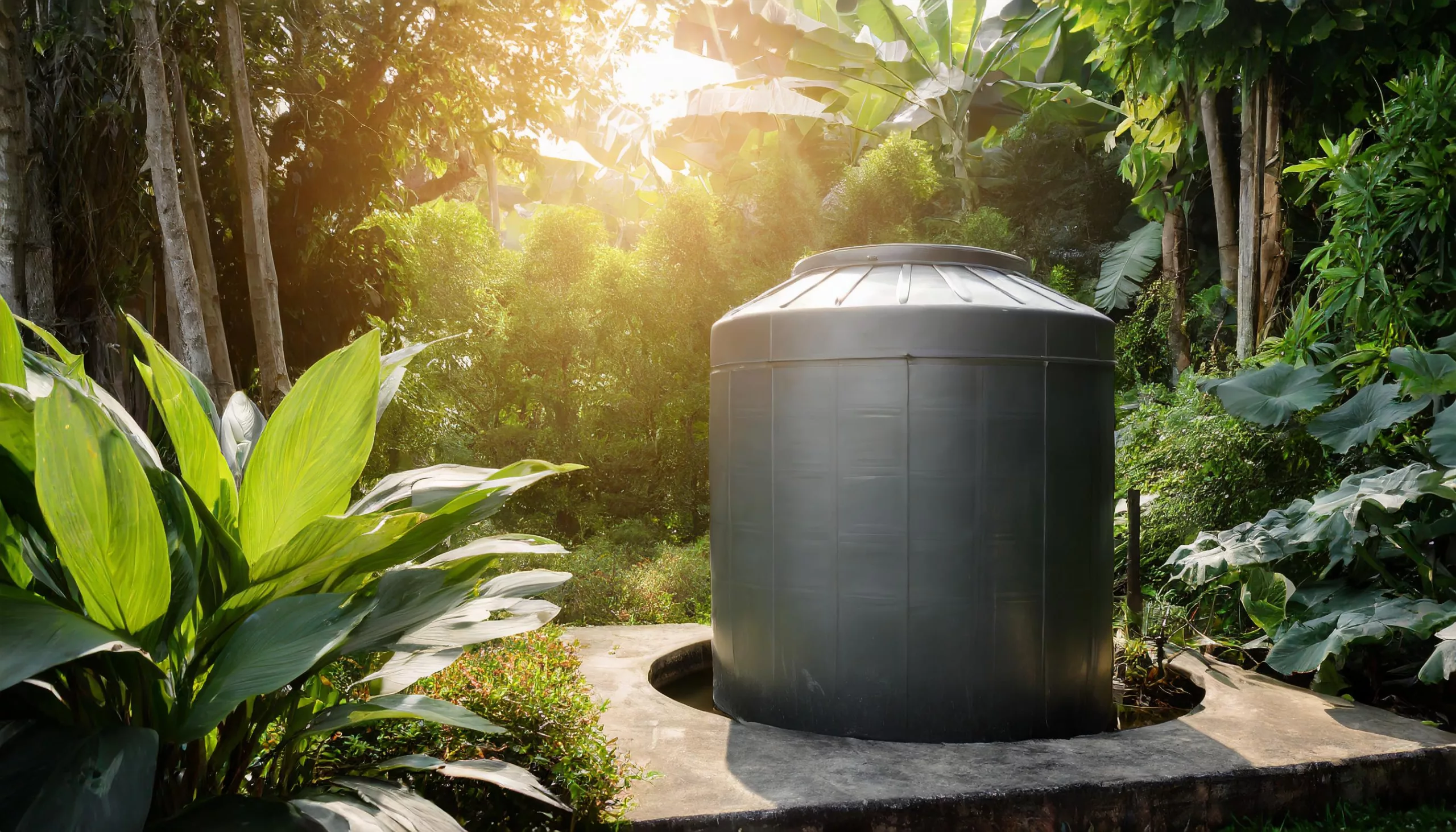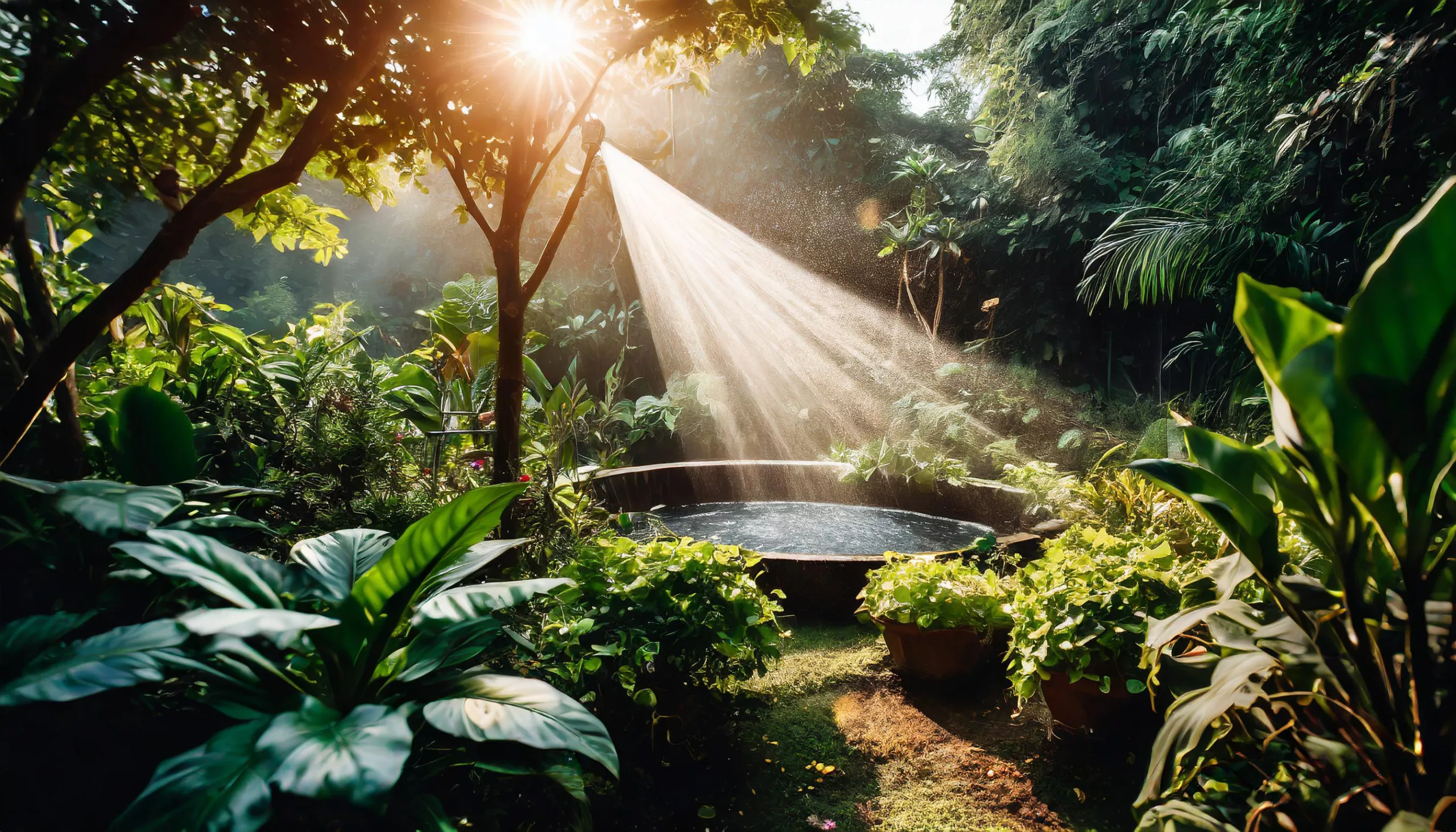Embracing sustainable practices in our homes has never been more crucial, and one key aspect of eco-friendly living is the efficient management of greywater. This comprehensive guide, titled “Simple Greywater Systems For Your Home,” aims to enlighten you on the basics, benefits, and practical aspects of residential greywater systems. From distinguishing between grey and black water to designing your system, understanding legal considerations, and maintaining a thriving greywater ecosystem, this guide covers it all.
Understanding the Basics and Benefits of Residential Greywater Management
In the quest for sustainable living, residential greywater management stands out as a fundamental practice that not only conserves water but also contributes to a more eco-friendly lifestyle. This section plumbs into the basics and highlights the significant benefits associated with adopting greywater management systems at home.
Basics of Greywater
Greywater is wastewater generated from household activities such as bathing, laundry, and handwashing. It differs from black water, which includes water from toilets and kitchen sinks. Greywater typically contains fewer contaminants and can be effectively treated and reused for various purposes within the household.
Benefits of Residential Greywater Management
1. Water Conservation: Greywater management allows for the reuse of water that would otherwise be considered waste. This not only reduces the demand for freshwater sources but also promotes responsible water consumption.
2. Cost Savings: By recycling greywater for non-potable purposes like landscape irrigation, homeowners can significantly reduce their reliance on municipal water supplies. This, in turn, leads to lower water bills and increased financial savings.
3. Environmental Impact: Greywater systems contribute to minimizing the environmental impact of water treatment facilities and the energy required to transport water over long distances. Using locally generated greywater reduces the carbon footprint associated with water consumption.
4. Sustainable Landscaping: Greywater is rich in nutrients, making it an excellent source for irrigating gardens and lawns. Reusing greywater in landscaping supports healthier plant growth and reduces the need for chemical fertilizers.
5. Drought Resilience: Greywater systems enhance a household’s ability to adapt to periods of water scarcity or drought. By having an alternative water source for non-potable needs, residents can maintain essential activities even in water-restricted conditions.
6. Community Contribution: Widespread adoption of residential greywater management can have a collective impact on local water resources. Communities that embrace greywater systems contribute to the overall sustainability of their region and foster a sense of environmental responsibility.
7. Educational Value: Implementing greywater systems provides an opportunity for homeowners to learn about water cycles, conservation practices, and sustainable living. It encourages a mindset shift towards responsible water management.
Key Distinctions Between Grey and Black Water for Informed Home Use

Understanding the differences between greywater and black water is essential for informed and responsible water management within homes. Both types of wastewater originate from various household activities, but they have distinct characteristics and require different handling processes. This section outlines the key distinctions between grey and black water to guide homeowners in making informed decisions about their water usage.
1: Source
Greywater: Originates from activities such as bathing, laundry, and handwashing. It does not include water from toilets or kitchen sinks.
Black Water: Originates from toilets and kitchen sinks, containing a higher concentration of organic matter and pathogens.
2: Composition
Greywater: Contains fewer contaminants compared to black water. It may still contain soap, hair, and small traces of organic matter.
Black Water: Typically includes human waste, food particles, and other organic materials, making it more polluted than greywater.
3: Treatment Requirements
Greywater: Generally requires less intensive treatment compared to black water. Basic filtration and disinfection are often sufficient for safe reuse.
Black Water: Requires more advanced treatment processes to remove harmful pathogens and contaminants before reuse or disposal.
4. Reuse Potential
Greywater: Suitable for non-potable purposes such as landscape irrigation, flushing toilets, and other outdoor uses.
Black Water: Typically requires extensive treatment before reuse due to higher levels of contamination.
5. Health and Environmental Risks
Greywater: Carries lower health risks and has a lower environmental impact, making it a safer option for certain applications.
Black Water: Poses higher health and environmental risks due to the presence of pathogens and contaminants.
6. Regulatory Considerations
Greywater: Regulations for greywater reuse vary by location. In many areas, it is subject to fewer restrictions compared to black water.
Black Water: Generally subject to stricter regulations due to its higher potential for harm and contamination.
7. Household Impact
Greywater: Implementing greywater systems can significantly reduce water consumption and contribute to a more sustainable household.
Black Water: Requires conventional sanitation systems, contributing to higher water usage and environmental impact.
Understanding these key distinctions empowers homeowners to make informed choices regarding the treatment, reuse, or disposal of wastewater within their homes. By recognizing the differences between grey and black water, individuals can adopt practices that align with both environmental sustainability and health considerations.
Insights into Environmental Impacts and Water Conservation Via Greywater Systems

1. Reducing Freshwater Demand: Traditional water sources, such as rivers and reservoirs, are under constant pressure to meet the escalating demand for freshwater. Greywater systems alleviate this strain by recycling and reusing water from daily household activities, thereby reducing the need for additional withdrawals from already stressed water supplies.
2. Minimizing Pollution: Conventional wastewater, particularly black water, is often laden with contaminants that can negatively impact water bodies and ecosystems. Greywater, being less polluted, reduces the overall environmental burden associated with wastewater discharge. This minimizes the risk of contaminating natural water sources and protects aquatic ecosystems.
3. Conserving Energy: Traditional water treatment and distribution systems consume significant amounts of energy. By reusing greywater locally, the need for extensive transportation and treatment is reduced, resulting in lower energy consumption.
4. Preserving Soil Health: Greywater, when used for irrigation, introduces beneficial nutrients to the soil, promoting healthier plant growth. This natural fertilization reduces the reliance on chemical fertilizers, minimizing the environmental impact associated with their production and usage.
5. Alleviating Pressure on Sewage Treatment Plants: Greywater systems divert a substantial portion of household wastewater away from sewage treatment plants. This diversion not only reduces the burden on these facilities but also lessens the environmental footprint associated with centralized treatment processes.
6. Mitigating Urban Heat Island Effects: Greywater used for landscaping and gardening helps create green spaces around homes. This, in turn, contributes to mitigating urban heat island effects by providing natural cooling through vegetation, reducing the overall energy demand for cooling in urban areas.
7. Promoting Sustainable Practices: Implementing greywater systems fosters a culture of sustainability within communities. By adopting these systems, households actively participate in water conservation efforts and contribute to a collective movement towards more environmentally conscious living.
From Waste to Resource: Designing Your Home Grey Water System
1: Treatment and Filtration Considerations: Once you’ve identified and categorized greywater sources in your home, it’s crucial to consider treatment and filtration methods. Assess the quality of greywater from each source and determine the appropriate treatment level needed for its intended reuse. Implementing filters, settling tanks, and biological treatment processes can help remove impurities and contaminants, ensuring that the treated greywater meets safety and regulatory standards.
2: System Customization for Optimal Efficiency: Tailor your greywater system to the specific characteristics of each source. Differentiate between sources that produce predominantly soapy water (e.g., showers and washing machines) and those with lower chemical content (e.g., sinks). This customization allows for more efficient treatment processes and optimized reuse, reducing the strain on the system and enhancing overall performance.
3: Storage Solutions: Consider incorporating storage options into your greywater system design. Storage tanks can help regulate the flow of greywater, ensuring a steady supply for reuse, especially during periods of water scarcity or when immediate reuse is impractical. Additionally, storage provides a buffer against fluctuations in greywater generation, allowing for a more consistent and reliable supply for various applications.
4: Distribution Planning: Plan the distribution of treated greywater based on its designated end-use. Whether it’s for landscape irrigation, toilet flushing, or other non-potable applications, design a distribution system that aligns with the quality standards required for each specific use. This targeted approach not only maximizes the benefits of greywater reuse but also minimizes the risk of using treated water for applications where lower-quality water may suffice.
5: Monitoring and Maintenance Protocols: Establish a comprehensive monitoring and maintenance plan for your greywater system. Regularly check for system efficiency, potential blockages, or malfunctions in treatment components. Implementing routine maintenance ensures the longevity and effectiveness of the system, preventing issues that could compromise water quality or violate regulatory standards.
By incorporating these considerations into the design of your home greywater system, you can transform waste into a valuable resource while maintaining a sustainable and legally compliant approach to water reuse.
Step-by-Step Guidance on Planning and Executing a Personal Greywater Setup

1: Assess Water Needs: Identify specific outdoor or non-potable water needs, such as irrigation, landscaping, or flushing toilets. Evaluate the water requirements for these activities to determine the scale of your greywater system.
2: Design Layout: Plan the layout of your greywater system, considering the location of sources, diversion points, and storage. Ensure ease of maintenance and accessibility for future system upgrades.
3: Select Appropriate Components: Choose compatible pipes, valves, and pumps for your greywater system. Opt for durable and environmentally friendly materials to minimize the system’s ecological footprint.
4: Installation: Follow local plumbing codes and regulations during the installation process. Seek professional assistance if needed, especially for complex plumbing work.
Legal Considerations: Compliance with Local Regulations for Greywater Reuse
Navigating the legal landscape surrounding greywater reuse is crucial to ensure a sustainable and legally compliant system. Here are some expanded considerations:
1: Thorough Regulatory Research: Before embarking on any greywater reuse project, conduct in-depth research on local laws and regulations about water reuse. Different regions may have distinct rules governing the collection, treatment, and use of greywater. This investigation should cover both state and municipal regulations to ensure comprehensive compliance.
2: Understanding Permit Requirements: Identify and understand the specific permit requirements applicable to greywater systems in your area. Permits may be needed for the installation, modification, or operation of greywater systems. Comprehend the conditions and limitations attached to these permits, such as the maximum volume of greywater allowed for reuse, approved uses, and any treatment standards.
3: Local Restrictions on Greywater Use: Some regions may impose restrictions on how greywater can be utilized. Certain outdoor activities like irrigation may be permitted, while others, such as direct discharge into open bodies of water, may be prohibited. Ensure that your greywater reuse plans align with these restrictions to avoid legal complications.
4: Engagement with Regulatory Authorities: Establish open lines of communication with local environmental and building authorities. Collaborate closely with these agencies to gain insights into their expectations and standards for greywater reuse systems. Seek guidance on the permitting process, technical requirements, and any environmental impact assessments that may be necessary.
5: Safety and Environmental Standards: Prioritize safety and environmental considerations in the design and implementation of your greywater system. Work in consultation with experts and regulators to adhere to established standards for water quality, treatment processes, and overall system safety. This collaboration will help ensure that your greywater reuse system not only complies with regulations but also safeguards public health and the environment.
6: Public Awareness and Education: Consider engaging in public awareness and education initiatives regarding greywater reuse. This can foster positive relationships with the community and local authorities by demonstrating your commitment to responsible water management. Addressing concerns and promoting the environmental benefits of greywater reuse can contribute to smoother regulatory processes.
7: Monitoring and Reporting: Implement a robust monitoring system to track the performance of your greywater reuse system. Regularly report data to relevant authorities as required by permits or regulations. This proactive approach not only demonstrates compliance but also helps identify and address any issues promptly, fostering a cooperative relationship with regulatory bodies.
8: Adaptability to Changing Regulations: Stay informed about evolving regulations related to water reuse. Regulations may change over time as environmental awareness and technology advance. Design your greywater system with flexibility in mind, allowing for adaptations to meet future regulatory requirements without significant overhauls.
In summary, a thorough understanding of local regulations, proactive engagement with regulatory authorities, and a commitment to safety and environmental standards are essential for navigating the legal considerations of greywater reuse. By following these guidelines, you can contribute to sustainable water management practices while remaining compliant with the law.
Collection and Diversion
1: Greywater Diversion Strategies: Implementing effective collection and diversion systems is a crucial step in maximizing the potential of your greywater reuse system. Consider installing diversion mechanisms that redirect greywater away from the conventional sewage line and channel it towards a designated treatment and storage area. This not only prevents the unnecessary mixing of greywater with blackwater but also facilitates a more controlled and efficient treatment process.
2: Separation for Enhanced Treatment: Differentiate between greywater sources with varying levels of contaminants. For example, water from kitchen sinks may contain higher levels of organic matter and fats compared to water from showers. Implementing separate diversion lines for different sources allows for more specialized treatment, ensuring that each stream receives the appropriate level of processing. This tailored approach enhances the overall efficiency of the treatment system.
3: Greywater-Friendly Products:

Opt for detergents and soaps labelled as greywater-friendly to maintain the quality of the collected water. Traditional household cleaning products often contain chemicals that can hinder the biological treatment processes in greywater systems. Using environmentally friendly and biodegradable products helps minimize the impact on the treatment system, preserving its effectiveness and ensuring that the treated greywater meets regulatory standards for reuse.
4: Regular Maintenance for System Integrity: Establish a routine maintenance schedule for the diversion system to prevent clogs, blockages, or other operational issues. Regularly inspect diversion valves, pipes, and filters to ensure they function optimally. Periodic maintenance not only extends the lifespan of the system but also reduces the risk of untreated water entering the greywater stream, maintaining the quality of collected water for subsequent treatment and reuse.
By focusing on effective collection and diversion strategies, along with the use of greywater-friendly products, your greywater reuse system can operate at its highest efficiency, contributing to both water conservation and environmental sustainability. Incorporating these elements into your overall system design ensures a seamless and compliant approach to harnessing the potential of greywater.
Filtration and Treatment
1: Advanced Filtration Techniques: Implementing effective filtration systems is essential for maintaining the quality of treated greywater. In addition to basic filtration methods like mesh filters, consider incorporating more advanced techniques such as sand filters or gravel beds. These systems enhance the removal of solid particles and debris, ensuring that the greywater entering the treatment phase is free from larger contaminants that could otherwise compromise the efficiency of downstream processes.
2: Particle Size and Mesh Selection: When choosing mesh filters, consider the specific particle size that needs to be filtered out based on the characteristics of your greywater. Different sources may produce varying sizes of particles, and selecting the appropriate mesh size ensures efficient filtration. Regular maintenance of these filters is crucial to prevent clogging and maintain optimal performance.
3: Biological Treatment for Enhanced Purification: Explore biological treatment options to further improve the water quality of your greywater. Biological filters leverage microorganisms to break down organic matter, pathogens, and other contaminants present in the water. This natural purification process enhances the overall quality of the treated greywater and aligns with eco-friendly principles, contributing to a more sustainable and environmentally conscious greywater reuse system.
4: UV Sterilization for Disinfection: Consider incorporating UV sterilization into your greywater treatment system. UV light effectively eliminates bacteria, viruses, and other microorganisms present in the water without the use of chemicals. UV sterilization is a sustainable and chemical-free method, providing an additional layer of disinfection to ensure the safety of the treated greywater, especially if it is intended for applications like irrigation or flushing toilets.
5: Activated Carbon Filtration for Chemical Removal: Address the presence of chemicals in greywater by integrating activated carbon filtration. Activated carbon is highly effective in adsorbing and removing various organic compounds and residual traces of detergents or cleaning agents. This additional filtration step contributes to a more comprehensive treatment process, resulting in higher-quality greywater suitable for a broader range of reuse applications.
6: pH Adjustment for Optimal Treatment: Monitor and adjust the pH levels of the greywater as part of the treatment process. Greywater from different sources may exhibit varying pH levels, and maintaining the optimal range is crucial for the effectiveness of biological treatment and other filtration methods. pH adjustment ensures that the treatment processes operate at their maximum efficiency, resulting in consistently high-quality treated greywater.
7: Routine Maintenance and Monitoring: Establish a routine maintenance schedule for the filtration and treatment components of your system. Regularly clean or replace filters to prevent clogs and maintain optimal performance. Implementing a monitoring system that tracks the efficiency of filtration and treatment processes allows for proactive identification of any issues, ensuring continuous water quality improvement.
By combining advanced filtration techniques with innovative treatment options, your greywater system can achieve higher levels of water quality, making it suitable for a broader range of beneficial applications. These considerations not only enhance the overall efficiency of the system but also contribute to sustainable water management practices.
Strategic Storage Implementation

Incorporating an efficient storage component into your greywater reuse system is pivotal for ensuring a continuous and reliable supply for various applications. Tanks or cisterns are commonly used as storage solutions to hold treated greywater for later use. These storage units act as a reservoir, allowing you to store excess treated water during periods of abundant greywater generation for use during times of increased demand or scarcity.
1: Customized Storage Capacity Calculation: Determine the optimal storage capacity by conducting a thorough analysis of both water demand and the availability of greywater sources in your household. Consider the daily water requirements for irrigation, flushing toilets, or other non-potable applications. Simultaneously, assess the consistent generation rate of greywater from various sources, such as sinks, showers, and washing machines.
2: Seasonal Variations and Greywater Availability: Take into account any seasonal variations in water demand and greywater generation. For example, during the summer months, outdoor irrigation needs may increase, requiring additional stored greywater. Understanding these fluctuations allows you to dimension the storage capacity to accommodate varying needs throughout the year, ensuring a reliable supply even in peak demand periods.
3: Balancing Storage Size and Space Constraints: While determining the ideal storage capacity, it’s essential to balance the size of the storage units with the available space on your property. Consider the physical footprint of the tanks or cisterns and ensure that they can be strategically placed for easy integration into your greywater system. This thoughtful approach not only maximizes storage capacity but also minimizes the impact on your property’s aesthetics and functionality.
4: Overflow and Redundancy Measures: Incorporate overflow and redundancy measures into your storage design to manage unexpected fluctuations or system malfunctions. Installing overflow mechanisms helps prevent damage due to excessive water buildup, redirecting excess water away from the storage unit. Additionally, having redundant storage capacity ensures that even if one tank is temporarily out of commission for maintenance or repairs, the system can still function with backup storage.
Adaptability for Future Expansion
Design the storage component of your greywater system with adaptability in mind. Anticipate potential changes in household water usage patterns or the addition of new greywater sources. An adaptable storage system can be easily expanded or modified to accommodate increased demand, technological advancements, or changes in regulations without requiring a complete overhaul of the existing infrastructure.
By meticulously calculating storage capacity based on demand and greywater availability, your greywater storage system becomes a crucial asset in ensuring a sustainable and reliable supply for non-potable applications. This strategic approach maximizes the benefits of greywater reuse while addressing the unique requirements of your household.
Day-to-Day Management: Preventing Common Issues and Ensuring System Longevity
Effective day-to-day management is crucial for maintaining a healthy and efficient greywater ecosystem. Follow these practices to prevent common issues and ensure the longevity of your system.
1. Regular Inspection: Conduct routine visual inspections of your greywater system components. Check for leaks, blockages, or any signs of wear and tear. Identifying and addressing issues promptly can prevent more significant problems in the future.
2. Monitor Water Usage:

Keep track of your household water usage patterns. Understanding peak demand periods allows you to adjust the system accordingly and prevents overloading during times of increased water flow.
3. Proper Disposal of Harmful Substances: Be mindful of what goes down your drains. Avoid disposing of harsh chemicals, grease, or non-biodegradable materials that can adversely impact the biological processes in the system. Dispose of hazardous substances through appropriate channels.
4. Regular System Flushing: Periodically flush the system with clean water to prevent the buildup of sediments and maintain the efficiency of filters and pipes. This simple maintenance step helps optimize the overall performance of your greywater setup.
5. Educate Household Members: Ensure that everyone in the household is aware of the greywater system and its limitations. Educate family members on water-friendly practices to promote responsible water usage and reduce the risk of unintentional system stress.
Choosing the Right Filtering Solutions to Optimize Performance
Selecting the right filtering solutions is instrumental in optimizing the performance of your greywater system. Consider the following factors when choosing filters:
1. Tailored Filtration: Customize your filtration approach based on the specific characteristics of greywater sources in your home. Differentiate between sources producing larger particles, such as washing machines, and those with finer sediments, like sink water. Choose filters with appropriate mesh sizes or filtration mediums to address these variations.
3. Maintenance-Friendly Designs: Opt for filters with user-friendly designs that facilitate easy maintenance. Quick-access features or filter replacement indicators can streamline the upkeep process, ensuring that filters are regularly serviced for optimal performance.
Eco-Friendly Product Recommendations for a Thriving Greywater Setup
Promote a thriving greywater setup by incorporating eco-friendly products into your household routine. Consider these recommendations:
1. Greywater-Compatible Detergents: Choose detergents and soaps specifically labeled as greywater-compatible. These products are formulated with environmentally friendly ingredients that won’t disrupt the biological processes in your greywater system.
2. Biodegradable Cleaning Products: Opt for biodegradable cleaning products for general household cleaning. These products break down more easily and have a lower environmental impact, supporting the overall sustainability of your greywater ecosystem.
3. Water-Saving Fixtures: Install water-saving fixtures, such as low-flow faucets and showerheads. These fixtures reduce overall water consumption, lessening the burden on your greywater system and promoting water efficiency in your home.
4. Natural Pest Control Methods: Embrace natural pest control methods to avoid the use of harmful chemicals that may impact the greywater system. Choose eco-friendly alternatives to deter pests without compromising the ecological balance of your greywater setup.
By adopting these practices and product recommendations, you can ensure the efficient day-to-day management of your greywater system, optimize its performance with the right filtering solutions, and foster a thriving ecosystem with eco-friendly choices.
Conclusion: The integration of greywater systems into homes not only revolutionizes water use practices but also embodies a broader philosophy of sustainable living. The case study, financial considerations, and reflections on global water issues collectively paint a picture of how small changes at the household level can have far-reaching impacts. As we navigate the challenges of water scarcity and environmental consciousness, greywater systems emerge as a practical and meaningful solution, symbolizing a transformative approach to how we interact with and manage this precious resource.



